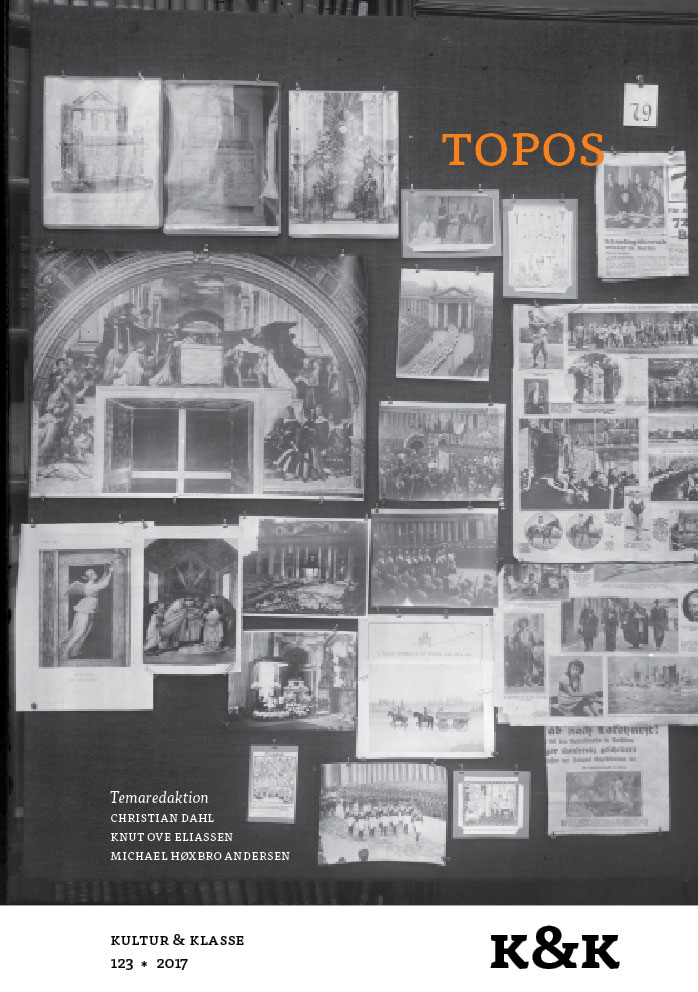Motiv og kontekst
DOI:
https://doi.org/10.7146/kok.v45i123.96831Nøgleord:
Litteraturhistoriografi, Kontekst-begrebet, Quentin Skinner, Det litterære motiv, Bakteriemotivet i dansk litteratur, Johannes V. Jensen, Villy Sørensen, Bjørn RasmussenResumé
This article deals with the properties and functions of the literary motif in relation to the text’s context. One tendency in present-day literary historiography is a growing scepticism towards contextualism. It takes its point of departure in a wish, on the critic’s part, to engage more actively with the text than a focus on its contexts allows. In the first part of the article, I present two concrete instances of this scepticism. In opposition to it, I defend contextualism – in the specific form of a historiographical practice that is able not only to make literary works more comprehensible to us, but also to make them more strange. I discuss Quentin Skinner’s formulation of this idea in the article’s second part. The article’s main thesis is that is by focusing on motifs, rather than themes, that we can verbalize the historical strangeness of literature. In the third part of the article, I discuss the motif’s ability to relate to the text’s context, drawing on the work done of Jesper Gulddal, Ernst Robert Curtius and Erich Auerbach. In the article’s fourth part, I relate my reflections on the relation between motif and context to the motif of bacteria in Danish literature. In three short readings of texts by Johannes V. Jensen, Villy Sørensen and Bjørn Rasmussen, I demonstrate how a focus on the motif at the same time promotes a synchronic perspective on the texts’ relation to their contexts, and a diachronic perspective on their mutual similarities and differences.
Referencer
Auerbach, Erich. ”La Cour et la Ville”. Scenes from the Drama of European Literature. Minneapolis: University of Minnesota Press, 1984. 133-179 (1951).
Barz, Christiane. ”Scientific Spirit, Spirituality and Spirited Writing. Spiritualism between science, religion and literature.” TijdSchrift voor Skandinavistiek 31 1 (2010): 121-158.
Beck-Lassen, Franz. ”Afselvfølgeliggørelse – Idéhistorien raison d’être”. Slagmark 67 (2013): 13-27.
Curtius, Ernst Robert. ”Beiträge zur Topik der mittellateinischen Literatur.” Corona Querna. Festgabe Karl Strecker zum 80.
Geburtstages dargebracht. Leipzig: Hiersemann, 1941. 1-14.
Curtius, Ernst Robert. Europäische Literatur und lateinisches Mittelalter. Bern/München: Francke Verlag, 1973 (1948).
Dimock, Way Chee. ”A Theory of Resonance”. PMLA 112 5 (1997): 1061-1071. doi: 10.2307/ 463483
Felski, Rita. ”Context stinks!” New Literary History 42 4 (2011): 573-591.
Gulddal, Jesper. Litterære pasregimer. Bevægelseskontrol og identifikation i europæisk litteratur 1725-1875. København: Museum Tusculanums Forlag, 2008.
Hansen, Rasmus Thorning. ”Motiv, tema og stof”. Om litteratur – metoder og perspektiver. Red. Leif Sønder-gaard. Århus: Systime, 2003. 268-92.
Haarder, Jon Helt. ”Villy og Sørensen. Skitse til en genlæsning af et forfatterskab.” Kritik 143 (2000): 1-9.
Jay, Martin. ”Historical Explanation and the Event: Reflections on the limits of Contextualization.” New Literary History 42 4 (2011): 557-571.
Jensen, Johannes V. Madame d’Ora. København: Gyldendal, 1916 (1904).
Jørgensen, Bo Hakon. ”Den amerikanske modernitet oversat til dansk.” Kristelig Dagblad 20. september 2011.
Marsalis, Lynn og Dorion Sagan. Acquiring Genomes. A Theory of the Origin of Species. New York: Basic Books, 2002.
Meiner, Carsten og Frederik Tygstrup. ”Le défi de la topologie littéraire”. Revue Romane 42 2 (2007): 177-187.
Nielsen, Erik A. ”Tema”. Om litteraturanalyse. Red. Lis Møller. Århus: Systime, 1995. 45-75.
Perkins, David. ”Historical Contextualism”. Is Literary History Possible? Baltimore/London: The Johns Hopkins University Press, 1992. 121-52.
Pollan, Michael. ”Some of My Best Friends are Germs.” New York Times Magazine 19.5.2013.
Prince, Gerald. Narrative as Theme. Studies in French Fiction. Lincoln: University of Nebraska Press, 1992.
Rasmussen, Bjørn. Huden er det elastiske hylster der omgiver hele legemet. København: Gyldendal, 2011.
Rösing, Lillian Munk. ”Når kroppen flyder. Om kropsvæsker i aktuel dansk litteratur.” Kritik 209 (2013): 44-50.
Sage, Victor. ”Theme”. The Routledge Dictionary of Literary Terms. Red. Peter Childs og Roger Fowler. 3. udg. London/New York: Routledge, 2006. 239-40.
Schmidt, Lars-Henrik og Jens Erik Kristensen. Lys, luft og renlighed. Den moderne socialhygiejnes fødsel. København: Akademisk Forlag, 1986.
Sestoft, Carsten. ”Tekst og kontekst i litteraturhistorien. Litteratur som distinkt historisk praksis.” K&K 29 2 (2001): 109-22.
Skinner, Quentin. ”Frihedsbegrebet og historikeren.” Politik og historie. En tekstsamling. Red. Frank Beck-Lassen og Mikkel Thorup. København: Hans Reitzels Forlag, 2009. 241-253 (1998).
Skinner, Quentin. ”Mening og forståelse i idéhistorien.” Politik og historie. En tekstsamling. Red. Frank Beck-Lassen og Mikkel Thorup. København: Hans Reitzels Forlag, 2009. 47-95 (2002).
Skinner, Quentin. ”Interpretation and the understanding of speech acts.” Visions of Politics vol. 1. Regarding Method. Cambridge: Cambridge University Press, 2002. 103-27.
Skinner, Quentin. ”Quentin Skinner on Meaning and Method.” the art of theory. conversations in political philosophy. 2011. Web. 30. September 2016. http://www.artoftheory.com/quentin-skinner-on-meaning-and-method/.
Stounbjerg, Per. ”Om det banale og fatale i ’Blot en drengestreg’”. Både frem og tilbage. Portræt af Villy Sørensens forfatterskab. Red. Marianne Barlyng og Jørgen Bonde Jensen. Hellerup: Spring, 2002. 59-66.
Sørensen, Villy. ”Blot en drengestreg”. Sære historier. København: Gyldendal, 1963 (1953).
Todorov, Tzvetan. Den fantastiske litteratur. En indføring. Århus: Klim, 2007 (1971).
Tucker, Herbert F. ”Introduction.” New Literary History 42 4 (2011): vii-xii.
Weber, Max. Wissenschaft als Beruf. Stuttgart: Reclam, 1995 (1919).
Downloads
Publiceret
Citation/Eksport
Nummer
Sektion
Licens
Tidsskriftet følger dansk ophavsret.





